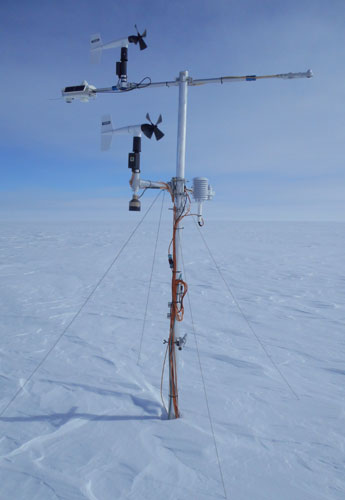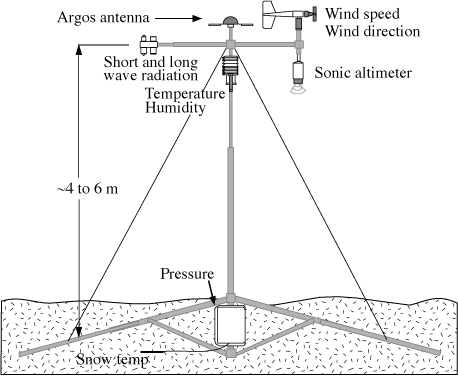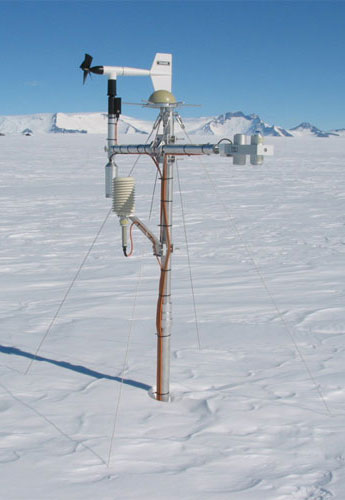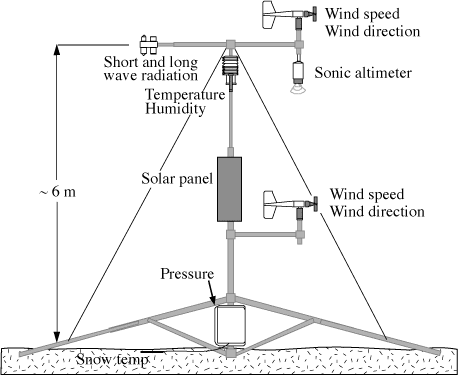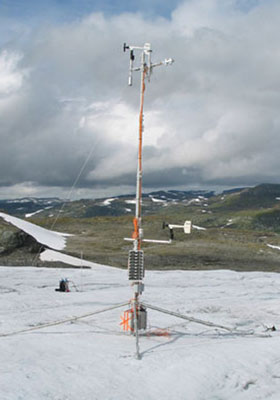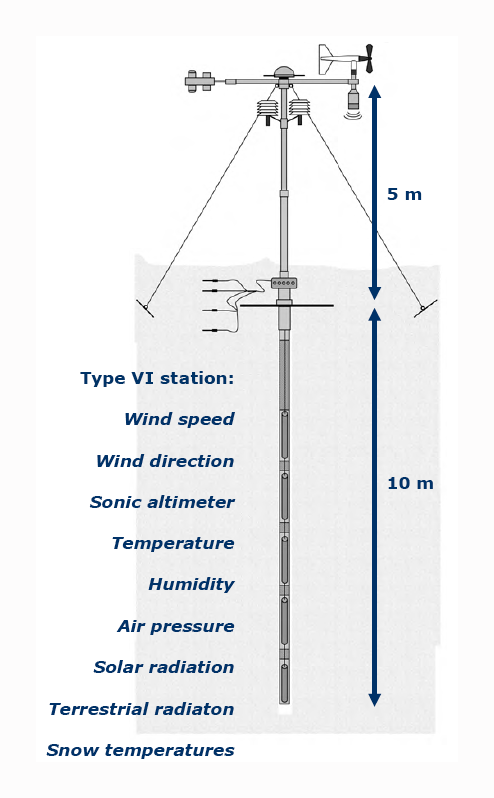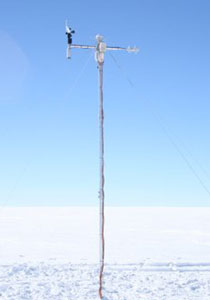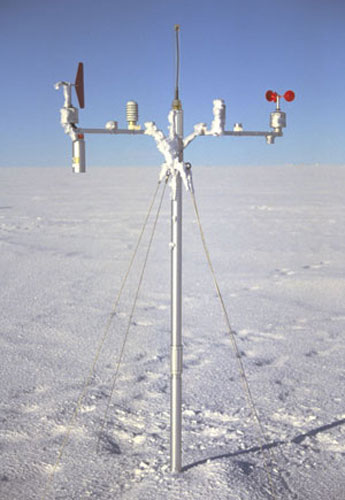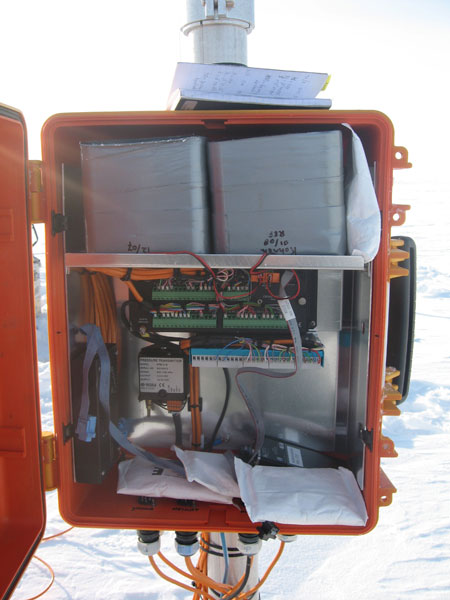Introduction
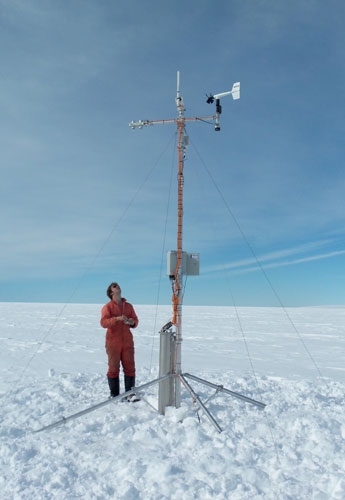
Over the years the instruments, number of parameters and the way the data is stored and transmitted has changed considerably. The figures below show the main types of stations used and some of the modifications. They show the stations as operated in accumulation areas. The sonic height ranger is placed on a separate tripod when the station is located in an ablation area. Most of the stations are equipped with Argos transmitters. The latest design is the iWS, a low power system that includes almost all instruments in a single housing.
Stations
Power supply
The main power source of the stations are packages of 3.6 V lithium batteries. Over the years, on an experimental base, some stations have been equipped with a solar panel and/or wind generator. On Antarctica a combination of wind generator and solar panel has been used to heat the Argos transmitter, which otherwise stopped working when temperatures drop below -50°C. Solar panels have also been used to provide additional power during the summer months to ventilate the temperature and moisture sensor. Due to increasing problems with shipping the batteries to the field sites the iWS is equiped with solar pannels and only a very small number of batteries are added to ensure operation in wintertime Antarctica, Greenland and Svalbard.

